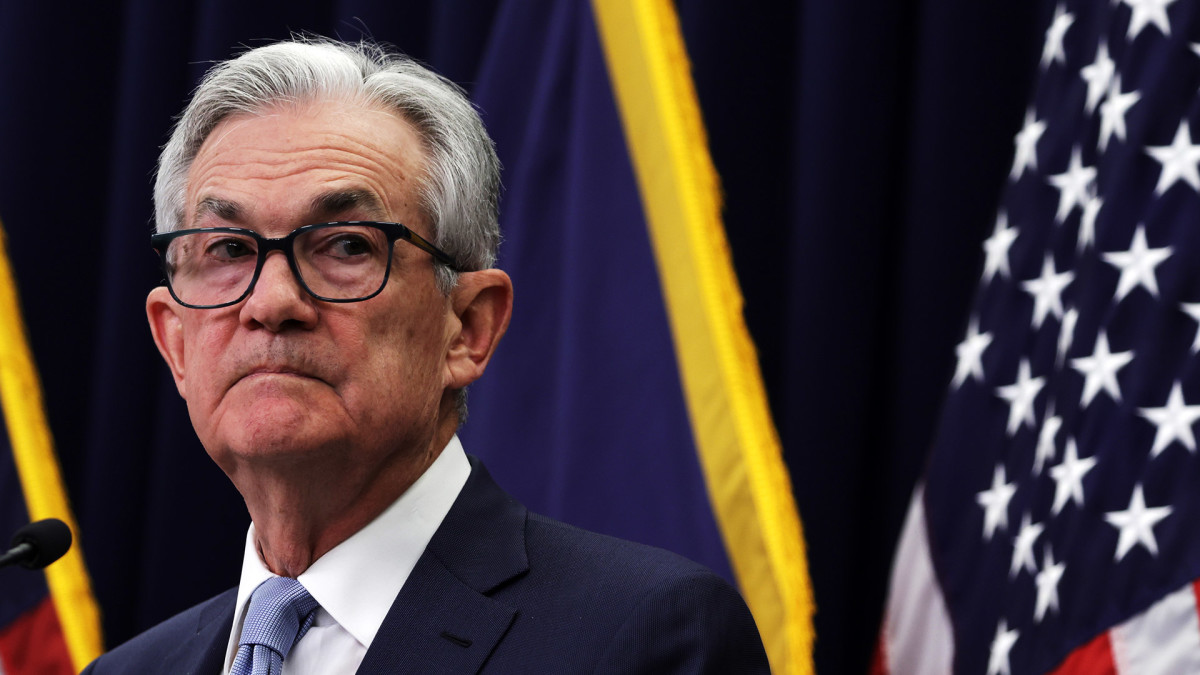
The Federal Reserve is unlikely to provide the kind of rate path clarity markets are looking for when it wraps-up its two day policy meeting later today in Washington, with a tight labor market still stoking inflation prospects and a resilient economy still defying earlier recession forecasts.
Federal Reserve Chairman Jerome Powell is almost certain to address the recent surge in Treasury bond yields, which lifted benchmark 10-year notes to a 2007 high of 5.027% last week, while noting that financial markets conditions have tightening significantly since the Fed's last meeting in August.
That tightening, however, still hasn't led to a cooling in the job market, or indeed the broader economy, with 336,000 new hires tallied over the month of September against a third quarter GDP growth rate of 4.9%.
That likely means that inflation, while slowing, is still not likely to slide back to the Fed's 2% target anytime soon.
“Inflation is still too high, and a few months of good data are only the beginning of what it will take to build confidence that inflation is moving down sustainably toward our goal,” Powell told the Economic Club of New York earlier this month. “We cannot yet know how long these lower readings will persist, or where inflation will settle over coming quarters.”
At the same time, with 2-year note yields holding at 5.073%, and long-bond yields testing multi-decade highs, another Fed rate hike would quickly increase the chances of recession heading into the start of the new year.
"We are all but certain the Federal Reserve will keep rates unchanged on Wednesday (and) we think the committee will maintain a hawkish policy tilt, signaling additional rate increases possible given the status of the economy" said Judith Raneri, senior portfolio manager at Gabelli Funds.
"And in keeping with a hawkish bias, we anticipate that they will mention additional tightening may be appropriate if there is evidence of persistently above-trend growth, in combination with signs labor market is no longer easing,” obviously leaving the option to do more," she added.
That option isn't finding its way into interest rate markets, however, as major policymakers such as the European Central Bank, the Bank of Canada – and likely the Bank of England tomorrow – pause their recent tightening cycles in the face of slowing domestic growth.
Benchmark 2-year Treasury note yields, meanwhile, are still notably lower than both the effective Fed Funds rate and the near-term projection of 5.6%, suggesting little faith in a bet on near-term hikes.
The CME Group's FedWatch, meanwhile, places no better than 34% chance of another quarter point hike, which would take the benchmark lending rate to 5.5% to 5.75%, over the next four meetings and in fact sees the first rate cut coming as early as June.
Joe Davis, chief economist at Vanguard, thinks talk of Fed easing, even in eight months' time, is premature, and notes that markets haven't quite adapted to the 'high for longer' rate signaling that Fed officials have been sending.
"Whatever the ultimate terminal rate, they are likely to remain on hold at that level for longer than had been previously anticipated," he said. "What’s more, when they do begin cutting rates, our research shows that they are likely to end at a higher neutral rate, likely closer to 3.5% than the 2.5% commonly assumed since the GFC."
"The market is finally acknowledging this, which has been one source of some of the recent market volatility," he added.
The timing of this week's Fed decision also highlights the focus Powell and his colleagues will likely devote to the labor market over the coming months, as well, with data on job openings for the month of September at 10:00 am eastern time today and the Labor Department's official non-farm payroll report coming on Friday.
Still, while job gains have been impressive over the past few months, employment costs are easing and wage pressures are abating as a result.
The Bureau of Labor Statistics said earlier this week that its third quarter Employment Cost Index rose 1.1% from the three months ending in June, and was up 4.3% from last year, marking the slowest annual gain in nearly two years.
"Many of the big drivers of inflation over the last few years have cooled, like lumber, new and used cars, gasoline, new residential leases, or house prices," said Bill Adams, Chief Economist for Comerica Bank in Dallas. "But inflationary pressures from labor costs continue to run a solid notch hotter than before the pandemic."
But the Fed is still wary of letting their guard down too early after missing their inflation target badly in the last few years," he added "They are likely to signal tomorrow that they are prepared to raise interest rates again if inflation strays from its current downward trajectory."
- Action Alerts PLUS offers expert portfolio guidance to help you make informed investing decisions. Sign up now.







